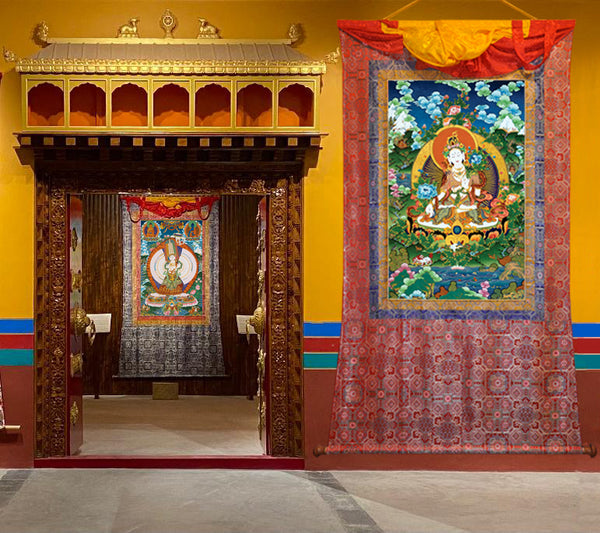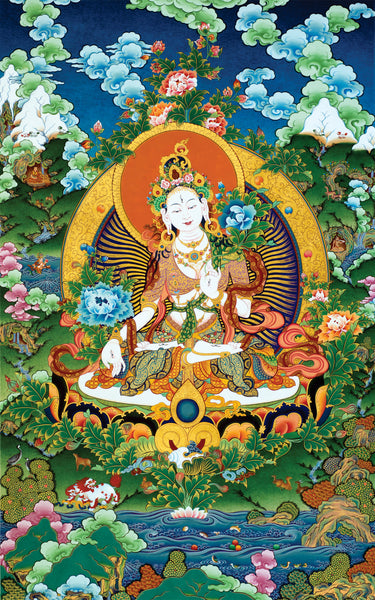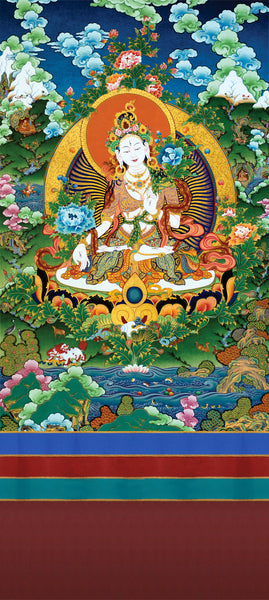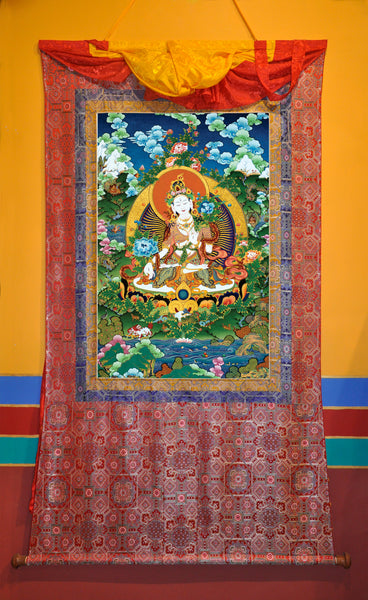4-5 Feet White Tara with Celestial Landscape (8-10 Feet with silk mount)
Image: White Tara
Artist: Master Locho
Photo: Weinberg-Clark Photography, United States
Two Years in making.
White Tara symbolizes transcendent knowledge, perfect harmony, and longevity. She is also considered a motherly deity. Practitioners meditate to her for strength, health, peace, prosperity, and endurance. The three blossoms of the lotus she holds represent the past, present, and future Buddha's-this representation allies White Tara with the Spirit of the Buddha. She is often, nearly always, depicted with seven eyes, which symbolize her omniscient vision. Within her headdress, Amitabha Buddha meditates.
White Tara created by Master Locho, which now resides in his private collection. Similar to most paintings within this book, this White Tara took several years to complete. She was created in the All-Color Style or Tson-thang. What makes this White Tara stand out is all the fine details and gold outlining. Her crown, thrown, and jewelry were all painted and outlined in gold. Some of the landscape imagery and animals depicted include: snow lions, deer, fishes, ducks, cows, cranes, flowers, lotuses, trees, shrubs, water falls, rivers, snow-covered mountain peaks, green mountains (one symbolizing Mount Meru), a Tibetan monk meditating in a cave; near a waterfall, the esoteric yogi Mahasiddhas (meditating with a bone horn), and the Naga King Nanda, all represented in harmony with one another. It is important to note that the Naga King Nanda is giving an offering to White Tara. King Nanda is identified by being represented with a half-man and half-serpent. He is almost always in the water and usually seen with five serpents atop his crown (as depicted within this painting). This is a typical scene in Buddhist painting due to Nagas or serpents being associated with water, controlling rainfall, and providing protection against fire caused by lightening.








